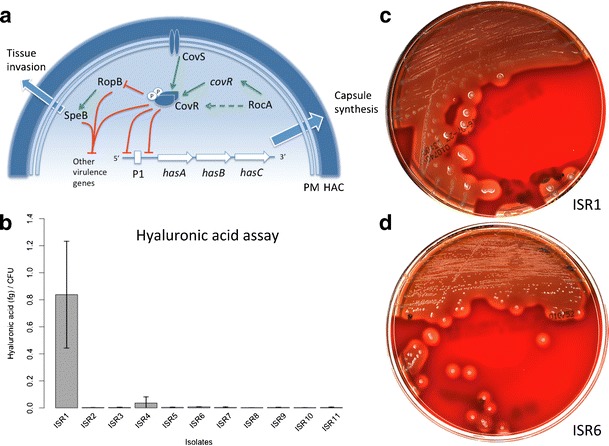Fig. 2.

a Simplified scheme showing the best-known transcriptional regulators of virulence in Streptococcus pyogenes missense and non-sense mutations in covR and covS can increase Streptococcus pyogenes virulence by relieving CovR downregulation of many virulence genes such as the has-operon involved in hyaluronic acid synthesis [9]. RocA positively regulates covR transcription and possibly directly phosphorylates CovR [10]. Mutations resulting in premature truncation of RocA were shown to increase hyaluronic acid production and virulence. Mutations in ropB, a negative transcriptional regulator of many virulence genes, have been linked to more invasive phenotypes [24]. This regulator is also necessary for the expression of speB, a gene encoding for a cysteine protease degrading many Streptococcus pyogenes virulence factors and whose expression is inversely proportional to virulence, though speB is also known to be a major virulence factor involved in tissue invasion and in the pathogenesis of necrotizing fasciitis [9]. PM plasma membrane, HAC hyaluronic acid capsule, P1 promoter region 1 of the has operon. b Enzyme-linked binding protein assay ISR1 (emm3.1) and ISR4 (emm1.0) produced a higher amount of hyaluronic acid. c, d Blood agar plates showing a mucoid phenotype (ISR1) and a non-mucoid phenotype (ISR6)
